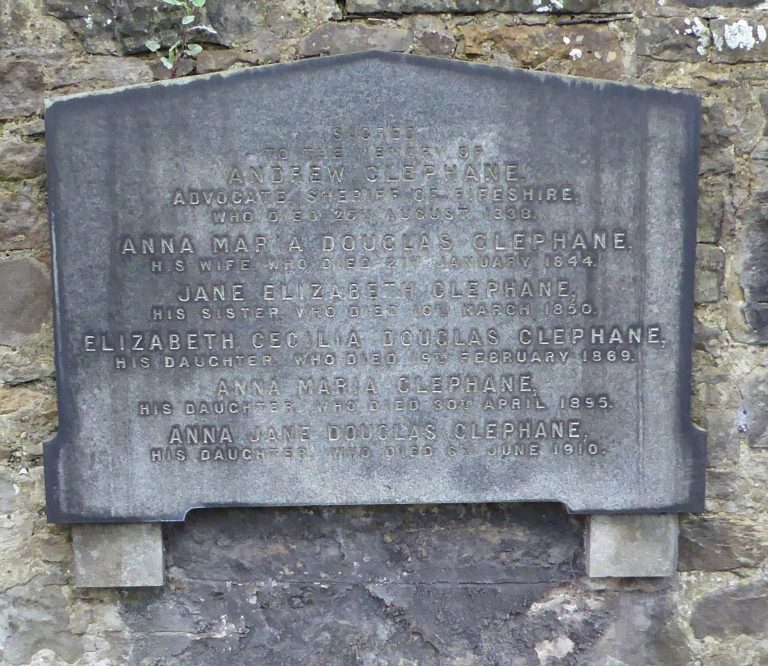Hymn History: Beneath the Cross of Jesus & Author: Elizabeth Cecilia Clephane
“She was one of those cheerful people who brighten every corner… Her friends called her ‘Sunbeam’.”
(Diana Leagh Matthews)
The Origin of the Hymn “Beneath the Cross of Jesus”
Among the tender and reflective hymns of the Christian faith, few express such heartfelt devotion and gratitude for Christ’s sacrifice as “Beneath the Cross of Jesus.” Written by Elizabeth Cecilia Douglas Clephane in the 19th century, this hymn has stood for generations as a poetic meditation on the shelter, love, and redemption found at Calvary. Its gentle words and reverent tone have made it one of the most cherished hymns of Lent and Holy Week, yet it remains equally powerful throughout the year as a hymn of personal devotion.
The Hymnwriter: Elizabeth Cecilia Clephane
Elizabeth Clephane (1830–1869) was born in Edinburgh, Scotland, into a family of distinction and faith. She lived a short but deeply devout life, marked by humility and compassion for others. Elizabeth’s health was delicate for most of her life, and she spent much of her time in quiet reflection and acts of charity around her home near Melrose, in the Scottish Borders. Known affectionately as “the Sunbeam” by those who knew her, she was beloved for her gentle spirit and selfless service to the poor.
Despite her frail health, Clephane possessed a keen mind and a poetic heart. Her poetry reflected her strong faith and her deep understanding of Christian love and suffering. She wrote only a handful of hymns—three in total—but all have endured. In addition to “Beneath the Cross of Jesus,” her other well-known work is “The Ninety and Nine,” which was made famous when evangelist Ira D. Sankey set it to music and sang it in the revival meetings of Dwight L. Moody.
Elizabeth Clephane died in 1869 at the age of thirty-nine, never knowing how beloved her hymns would become. Her poems were published posthumously in The Family Treasury in 1872, where they were soon discovered by hymn compilers and musicians.
The Writing and Meaning of the Hymn
“Beneath the Cross of Jesus” was written only a year or two before Clephane’s death. It reflects both her deep personal piety and her awareness of human frailty. The hymn is a meditation on the spiritual refuge found in the shadow of Christ’s cross—a place of both sorrow and peace, judgment and mercy.
The opening stanza captures the essence of the hymn’s devotion:
Beneath the cross of Jesus
I fain would take my stand,
The shadow of a mighty Rock
Within a weary land;
A home within the wilderness,
A rest upon the way,
From the burning of the noontide heat,
And the burden of the day.
Here, Clephane draws on biblical imagery—particularly from Isaiah 32:2, which describes “a man shall be as an hiding place from the wind, and a covert from the tempest.” The “shadow of a mighty Rock” evokes Christ as both refuge and foundation, while “a home within the wilderness” speaks to the believer’s longing for rest amid life’s trials.
The second stanza reveals Clephane’s deep humility and awe at Christ’s sacrifice:
Upon that cross of Jesus
Mine eye at times can see
The very dying form of One
Who suffered there for me;
And from my stricken heart with tears
Two wonders I confess:
The wonders of redeeming love
And my unworthiness.
Few lines in hymnody capture so simply and profoundly the dual truths of salvation—the infinite love of Christ and the believer’s sense of unworthiness in receiving it. The hymn, in essence, is a prayer of gratitude and reverence.
The Music: Frederick C. Maker’s Setting
The tune most often associated with “Beneath the Cross of Jesus” is ST. CHRISTOPHER, composed by Frederick Charles Maker (1844–1927), an English musician and organist. Maker’s melody, first published in 1881, perfectly complements Clephane’s text. It is stately yet tender, rising and falling in a way that mirrors the emotional journey of the lyrics—from the shadow of the cross to the peace of God’s presence.
While earlier settings of the hymn existed, Maker’s tune became the standard because of its solemn beauty and singable character. Its use in both British and American hymnals throughout the late 19th and 20th centuries ensured that the hymn would remain widely known.
Reception and Influence
Since its publication, “Beneath the Cross of Jesus” has been treasured by Christians across denominations. It appeared in numerous 19th-century hymnals, and by the early 20th century, it was firmly established as a standard hymn of devotion and contemplation.
Evangelists, choir directors, and congregations alike embraced it for its tender portrayal of personal faith. In the United States, it became particularly popular during the Lenten season and at communion services. Its message of refuge and redemption continues to speak to those seeking comfort in Christ’s presence amid the trials of life.
Legacy and Enduring Message
What makes “Beneath the Cross of Jesus” endure is not merely its poetic beauty but its spiritual depth. Elizabeth Clephane wrote from the perspective of one who knew suffering yet had found peace in Christ. The cross, to her, was not only the symbol of salvation but the source of strength and rest in every burden of life.
Her words invite each believer to come near—to stand “beneath the cross” and find shelter in its shadow. It is a hymn that turns the eyes of the faithful from the noise of the world to the quiet center of Christian hope: the crucified Savior.
“I take, O cross, thy shadow
For my abiding place;
I ask no other sunshine than
The sunshine of His face.”
With such lines, Elizabeth Clephane left the church a hymn of rare grace—one that continues to draw hearts to the foot of the cross, where the weary find rest and the forgiven find joy.
Related
Sorry, no records were found. Please adjust your search criteria and try again.
Sorry, unable to load the Maps API.

